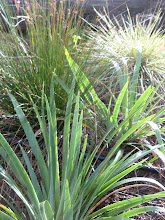Here is an excellent article, "Keeping it Living." that describes some of the native traditional horticultural practices of British Columbia.
Here's an excerpt about pruning:
"Pruning and coppicing of individual berry and
hazelnut (Corylus cornuta) bushes was also
practiced, both on the coast and in the interior:
another means of “keeping it living,” since this
process took advantage of meristematic tissues
at the bases and nodes of the stems of shrubs
that allow them to regenerate easily. The
breaking of the branches of berry bushes has
been little documented, but like other practices,
this may be in large part because people
had not been asked about such practices.
California First Peoples are known to coppice
their basketry plants to produce better, longer,
and straighter shoots (Anderson 1993). In the
interior, too, Plateau peoples talk about increasing
the productivity of their saskatoon
bushes (Amelanchier alnifolia), chokecherries
(Prunus virginiana), soapberries (Shepherdia
canadensis), and huckleberries (Vaccinium
spp.) by breaking the branches off during or
following the harvest. On the coast, this seems
to be a widely known but little publicized
practice. Chief Adam Dick, as soon as he was
asked, started to talk about it: “Especially that
gwadems [red huckleberry, Vaccinium
parvifolium], when they finished picking the
gwadems, you know, they pruned them. They
chopped the tops off. Salmonberries [Rubus
spectabilis] too. So, when the qwasem it’s
done, after you pick... after they get all
tl’axwey’ then we all break the tops off.” [“Oh,
and that makes them grow better?” NT] “Yes.
My grandma tell me that if you let it grow this
high [above your head], then it doesn’t produce
much berries. You know. But when you keep it
down and, she says, the water, it’s hard going
up there, I guess, when it’s too tall.”
Trifolium wormskioldii, the clover I introduced to my garden, turns out to be a species that was cultivated in fields alongside Pacific silverweed. Rhizomes from both plants were actively propagated, harvested, cooked, and eaten by peoples of British Columbia. (Yes, I would like to try preparing the rhizomes, but I need to let my plants grow for a while.)
The article also documents how plants were transplanted and traded by native peoples, raising interesting questions about the native/nonnative dichotomy AND helping to deepen the idea of sustainability, the idea of "keeping it living."
Sunday, October 7, 2007
Subscribe to:
Post Comments (Atom)

No comments:
Post a Comment